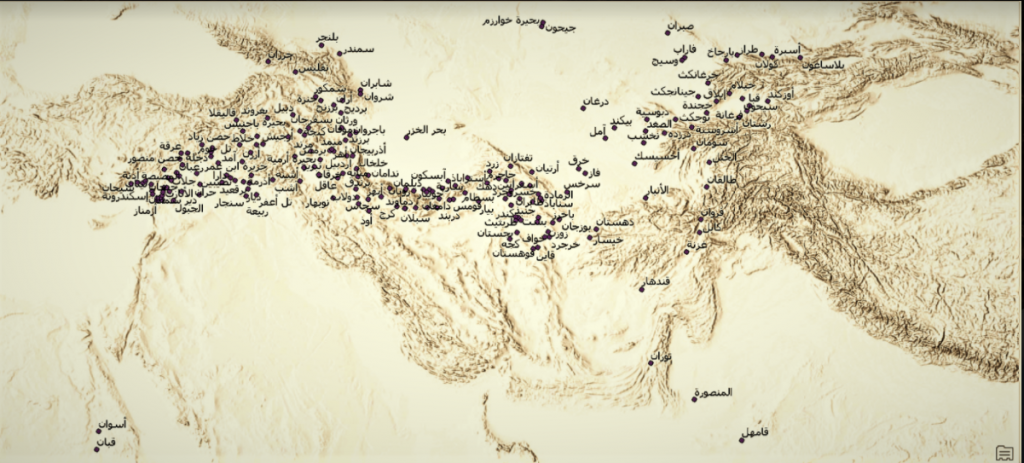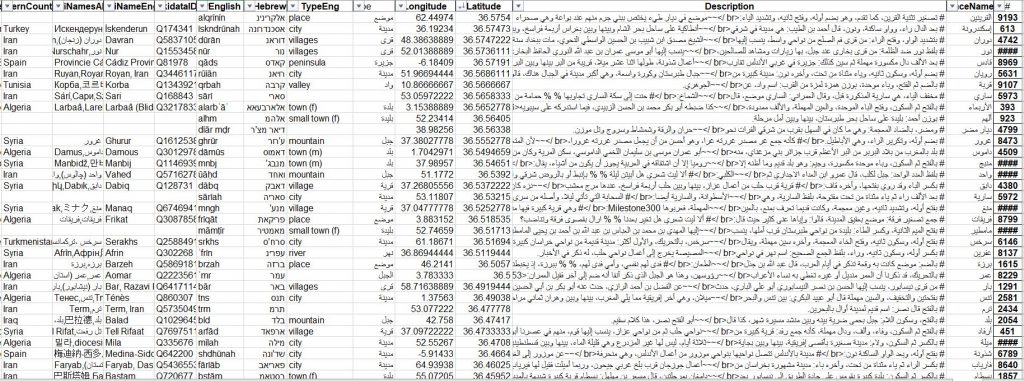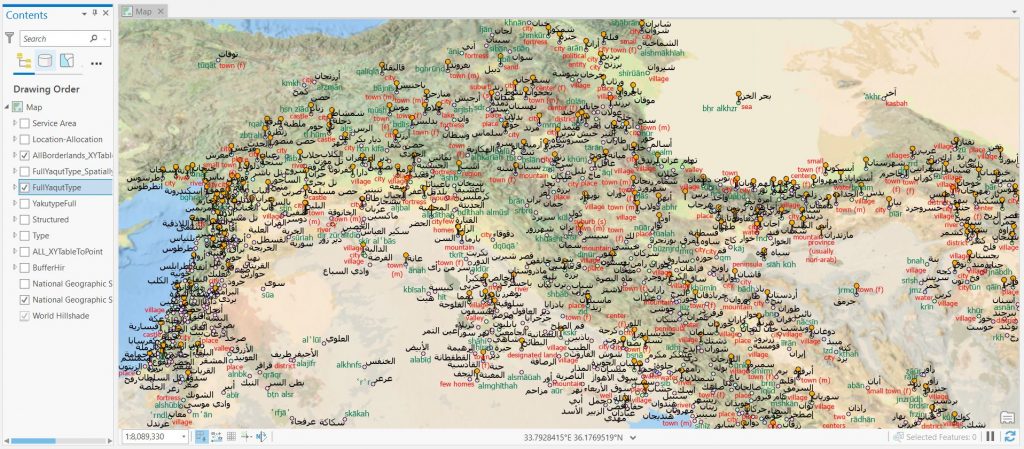Living on the Edge: The Minorities of the Muslim Caliphate’s Borderlands
This project outlines the fronts and border areas of the Muslim Caliphate in the period between 950-650 AD (under the rule of the late Chief Don, the Umayyad Dynasty and the Abbasid Dynasty). Peripherals that attracted minorities to settle in. Among these communities we can name the Armenian Jews, the Assyrians, the Berbers, etc. This project focuses on the Jewish community.

In the first phase, the project characterizes the structure of the different fronts of the Caliphate, as they are described in the classical literature of Muslim geography. We have created a database that includes the following criteria: place name, location, place type, administrative hierarchy, source description and source link. We combined our data with additional information available online, for example in Wikidata and the al-Ṯurayyā project. The gazetteer (index of places) we built is largely based on the Dictionary of the Countries (Muʿjam al-buldān) of the Muslim geographer Yaqat al-Hamawi (1179–1229) whose composition is available thanks to the contribution of projects such as Shamela, Kitab and OpenITI. The latest project (OpenITI) develops digital tools for automatic text recognition and text structure in Arabic from the pre-modern period in Markdown format.

This phase also includes the creation of a digital map based on the data base and a comparative geographic analysis of military and settlement layout, demographic layout with an emphasis on the minority communities, administrative division and connections of settlement networks and activities between the various fronts.
The second phase of the project deals with the main research question and analyzes the unique characteristics of the Jewish community in the border areas, while analyzing aspects of demography, lifestyle and occupation. For this purpose, we will use the tools of information extraction and entity recognition (Named Entity Recognition) in the text on texts available in Hebrew, Arabic and English, which deal with the description of the Jews in these areas.

Our Team

Dr. Moran Zaga - Head Of Project

Prof. Efraim Lev - Supervisor



